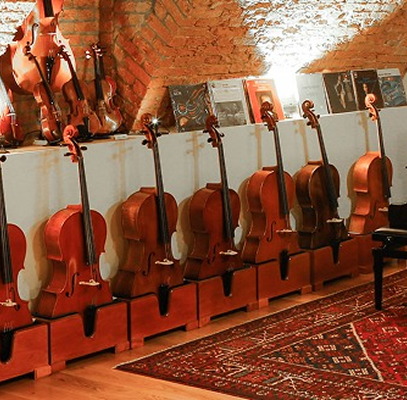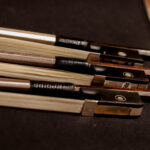The Art of Violin Making: Master Craftsmanship for Discerning Musicians
Back to BlogAt Amorim Fine Violins, we preserve the sacred tradition of luthiery while meeting the demands of today’s most exacting performers. Every instrument we create is the result of over 300 hours of meticulous work, guided by generational expertise and a relentless pursuit of acoustic perfection.
The Foundation of Sound: Wood Selection and Acoustic Potential
The process of making a world-class violin begins long before the first carving. The tonewood is the soul of the instrument, and our selection process ensures each piece meets the highest standards of quality and resonance.
- Spruce Tops: Harvested from Alpine forests and aged for years. We assess grain uniformity, density, and elasticity, as these directly influence tonal projection and response.
- Maple Backs and Ribs: European flamed maple with tight, consistent grain ensures stability and contributes to the violin’s clarity and brilliance.
- Resonance Testing: Every tonewood is manually tapped and sonically evaluated to detect its natural harmonic potential before use.
This selection process is critical—an improperly chosen piece can inhibit tonal development, while the right wood becomes the voice of the instrument.
Tradition Meets Precision: The Construction Process
The violin’s construction is a dialogue between centuries-old techniques and modern precision. Our approach integrates historical methods rooted in the Cremonese school with contemporary enhancements that improve consistency without sacrificing artistry.
- Hand-Carving: We follow traditional Cremonese templates for scroll, arching, and graduation, using only hand tools to preserve control and intuition at every stage.
- Thickness Mapping: To optimize the tonal balance, we employ our own thickness mapping with tools that guide micro-adjustments in plate thickness—preserving historical form while enhancing acoustic predictability.
- Varnishing: Our proprietary varnish process, developed over decades, involves many layers, each enhancing the wood’s visual depth and allowing full vibrational response.
This balance between heritage and contemporary vision enables us to produce instruments that resonate with both historical authenticity and modern performance expectations.
The Final Touch: Customization and Fine Adjustment
Every musician has a unique tonal identity. At Amorim Fine Violins, each instrument is customized to align with the individual needs of the performer.
Player-Specific Setup: Bridge height, soundpost placement, and fingerboard projection are adjusted to match the player’s playing style, repertoire, and tonal preferences.
Acoustic Calibration: Prior to delivery, instruments undergo tonal refinement based on real-time player feedback. Subtle adjustments in the setup ensure optimal projection, balance, and comfort.
Documentation and Support: Each violin includes certificate of authenticity and is eligible for our long-term acoustic maintenance program.
These refinements ensure that the instrument feels natural in the hands of the musician—and sounds as if it were always meant to.
What Sets Amorim Violins Apart
No two Amorim violins are alike. Subtle differences in wood aging, carving nuance, and luthier intuition mean that each instrument evolves into a singular voice. This commitment to individuality sets our work apart from mass-produced instruments.
Our violins are crafted for:
Concert Soloists: Demanding projection, dynamic range, and tonal complexity.
Professional Students: Requiring reliable response and long-term adaptability.
Collectors: Seeking exceptional instruments with documented lineage and artistic value.
Begin Your Journey
Commissioning or acquiring an Amorim Fine Violins is an invitation to experience uncompromising quality and dedication.
[Book a Private Consultation]
[Explore Our Craftsmanship Process]
Each violin we make is more than an instrument—it is the embodiment of sound, tradition, and the enduring pursuit of musical excellence.









